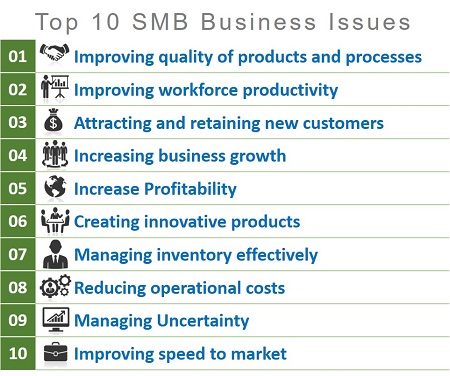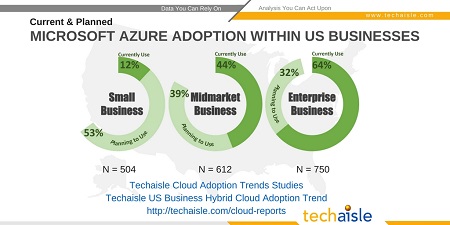The first step in understanding if a particular type of technology will be important to a market is to understand why it might be important: how can the technology meaningfully address the business needs within the target community? This begs in turn a more fundamental question – what are these needs?
Techaisle’s recent SMB Cloud Adoption survey shows that the top ten business issues identified by SMBs align with well-recognized cloud attributes or applications. For example, cloud is seen as a way of delivering improved automation to a very wide range of functions, within IT and across the business as a whole; these solutions improve processes, which in turn will improve production and support of products. Cloud also supports key collaborative technologies (notably, mobility and file exchange), which have a positive impact on productivity, and cloud is viewed as the primary platform for ‘systems of engagement’ that help businesses attract and retain new customers. Cloud encompasses many different types of offerings, which deliver benefits that align with SMB needs.

Similar observations are made regarding the challenges faced by small and midmarket businesses.












